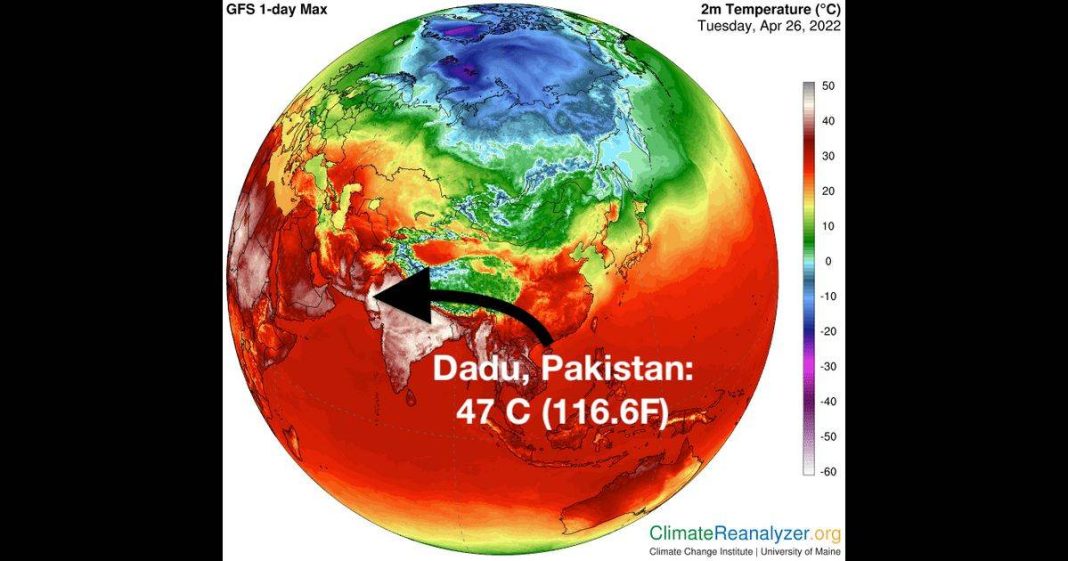According to the latest report, Pakistan’s city Dadu in Sindh has been recorded as the hottest city in the Northern Hemisphere for the month of April.
Pakistan has been experiencing sweltering temperatures too early in the month of April making it the hottest country in the Northern Hemisphere. Pakistan and India have been under an extreme heatwave with temperatures expected to rise further this week.
As per the latest prediction by the Pakistan Meteorological Department, the temperatures are expected to rise by six to eight degrees in most parts of the country in the coming days. Upper and Central Sindh, Central and South Punjab, and Balochistan are likely to experience six to eight degrees higher temperatures than normal days.
Unbelievably hot today! This is an indication that Pakistan is getting hit by climate change far worse than other countries. We need CLIMATE CHANGE POLICY not just planting trees but it requires serious budget,planning and awareness https://t.co/YipenA2jo4
— Badar (@BadarKhalid8) April 28, 2022
Islamabad, Khyber Pakhtunkhwa, Gilgit Baltistan, and Azad Kashmir are also likely to experience a rise in daytime temperature more than normal.
The heatwave is hitting parts of India and Pakistan with more than a million people at risk of heat-related health impacts.
Read more: Climate change in Pakistan: An undeniable reality
A serious situation
Social media users have asked the government to issue alerts and warnings for the people and take precautionary measures to save the lives of people.
National Disaster Management Authority and Meteorological Department have already issued a warning for district administrations to prepare heatstroke centers and necessary medical services.
Pakistan is among the six most vulnerable countries to be adversely affected by climate change. Climate change in Pakistan is projected to have far-reaching consequences on the country’s ecology and people. Pakistan’s climate has become increasingly variable in recent decades as a result of ongoing climate change, and this trend is anticipated to continue in the future.
The melting of glaciers in the Himalayas threatens several of Pakistan’s most vital rivers, in addition to increased heat, drought, and harsh weather conditions in some sections of the country. Pakistan was ranked the fifth-worst affected country in terms of extreme climate caused by climate change between 1999 and 2018.














